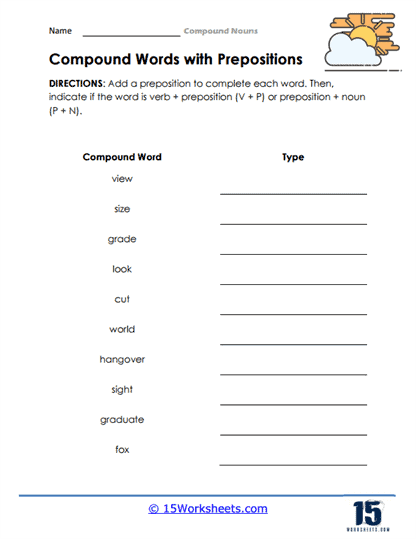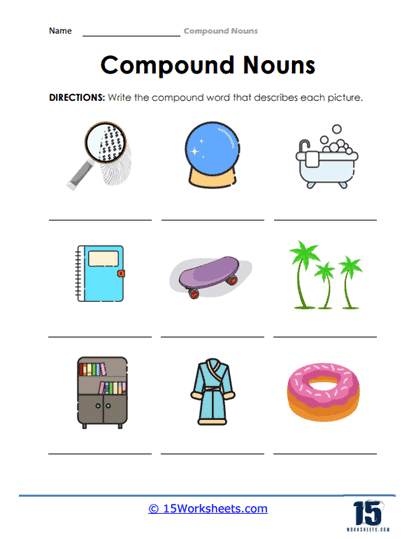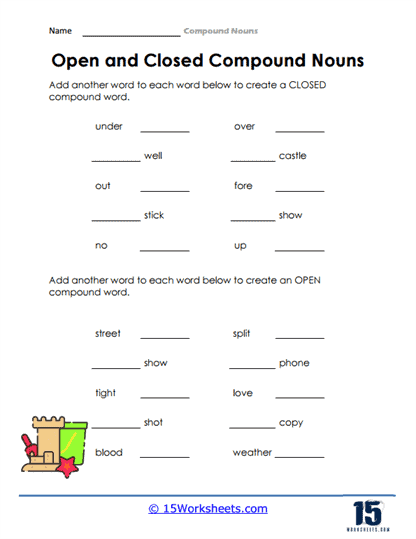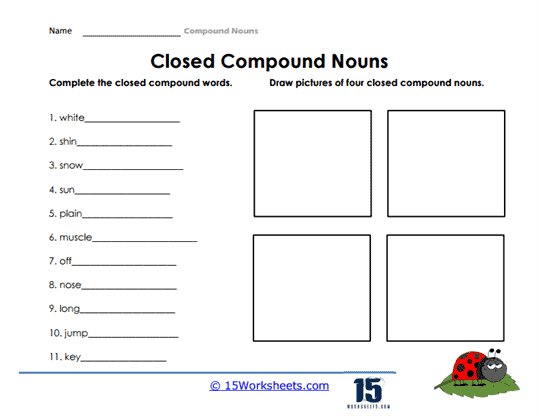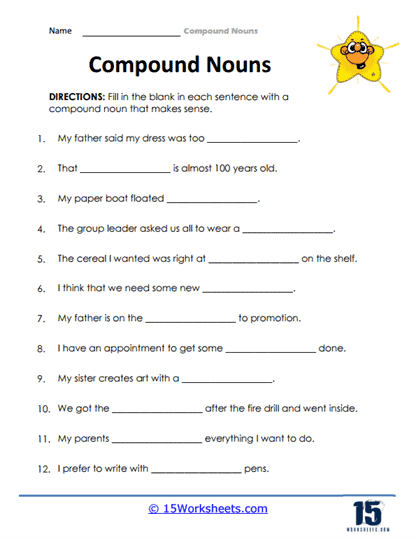Compound Nouns Worksheets
All About These 15 Worksheets
Whether you’re a student sharpening your language skills or a teacher looking for a meaningful way to reinforce vocabulary, this collection offers a fun, engaging, and thoughtfully designed way to explore language. Each puzzle is more than just a game – it’s a journey into the richness of words, structure, and the joy of problem-solving.
These word searches cover a wide variety of themes, ranging from grammar and spelling to science, holidays, and everyday topics, making them ideal for learners of all ages and interests. As students hunt for hidden words, they’re not only improving their visual tracking and attention to detail, but also reinforcing their understanding of word patterns, spelling conventions, and topic-specific vocabulary – all in a low-pressure, high-enjoyment format.
A Look At the Individual Worksheets
Dissecting Compound Nouns invites students to play the role of linguistic surgeons, carefully separating compound nouns into their individual components. It’s a meticulous task that sharpens analytical skills and deepens understanding of word structures.
In the Word Fusion Challenge, learners become wordsmiths, blending separate words to forge new compound nouns. This exercise not only enhances vocabulary but also sparks imagination, as students explore the endless possibilities of word combinations.
Matching Word Pairs and Combine With Nouns are akin to linguistic matchmaking. Students pair words to form meaningful compound nouns, reinforcing their grasp of word relationships and enhancing their ability to recognize compound structures in everyday language.
Find the Right Form and How Many Can You Create? push students to think flexibly about compound nouns. Whether selecting the appropriate form or generating as many compound nouns as possible from given words, these activities promote creative thinking and adaptability.
Noun Pair-Up and Linguistic Alchemy delve deeper into the art of word combination. Students experiment with pairing nouns in various ways, discovering how subtle changes can alter meanings and create entirely new concepts.
Prepositions For Precision and Open Word Connections challenge students to consider the role of prepositions and spacing in compound nouns. These exercises highlight the importance of syntax and structure in conveying precise meanings.
Uniting Words with Hyphens and Word and Picture Link blend grammar with visual learning. Students learn the rules of hyphenation while associating compound nouns with images, catering to diverse learning styles and reinforcing memory through visual cues.
Crafting Open and Closed Compounds and Closed Compound Masterpieces encourage students to explore different forms of compound nouns. By constructing both open and closed compounds, learners gain a comprehensive understanding of how compound nouns function in various contexts.
Finally, The Missing Link serves as the grand finale, challenging students to identify and fill in missing components of compound nouns. It’s a test of all the skills they’ve acquired, wrapped in a fun and engaging format.
What are Compound Nouns?
Compound nouns are nouns that are made up of two or more words joined together to form a single entity that functions as a noun. The words that make up the compound noun can be either separate or connected by a hyphen or they can be combined into one word.
Examples of compound nouns include:
- toothbrush (tooth + brush)
- bookcase (book + case)
- sunflower (sun + flower)
- chocolate chip cookie (chocolate + chip + cookie)
- high school (high + school)
Compound nouns can be formed by combining a pair of different parts of speech such as two nouns, an adjective and a noun, a verb and a noun, or a preposition and a noun. They are commonly used in everyday language and can help to make writing more concise and efficient.
Open, closed, and hyphenated compound nouns are three different types of compound nouns, and students’ knowledge and mastery on them will be tested in these worksheets.
Open compound nouns – An open compound noun is formed by joining two or more words together without any spaces or hyphens. Examples include “coffee table,” “school bus,” and “air conditioning.”
Closed compound nouns – A closed compound noun is formed by joining two or more words together into a single word without any spaces. Examples include “bedroom,” “toothbrush,” and “notebook.”
Hyphenated compound nouns – A hyphenated compound noun is formed by joining two or more words together with a hyphen. Examples include “self-esteem,” “mother-in-law,” and “six-pack.”
It is important to note that there can be some variation in how compound nouns are written, and different style guides may recommend different forms. For example, some words that are written as open compounds in American English are written as closed compounds in British English. Similarly, some compound nouns may be written with or without a hyphen depending on the context and usage.









